Doctorate of Physical Therapy (DPT) Hybrid Pathway with UOnline: A Conversation with DPT Professor and Director of the Hybrid Pathway, Dr. Jennifer Hale
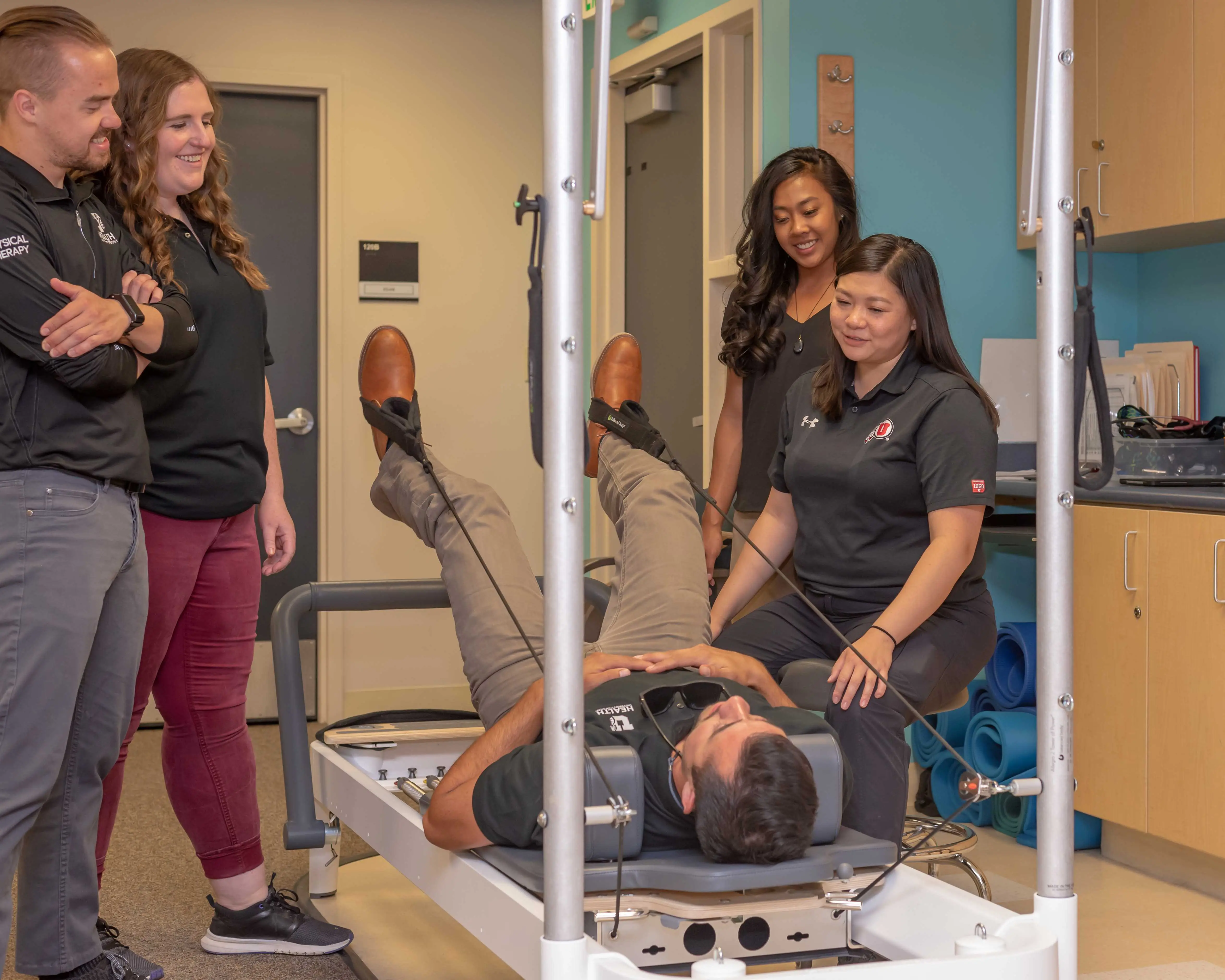
What should students expect in the hybrid Doctorate of Physical Therapy (DPT) program at the University of Utah? We spoke with Jennifer Hale PT, DPT, PhD, the Director and Associate Professor with the U to learn more about the program and get the answers to potential students’ commonly asked questions.
Introducing Professor Jennifer Hale:
We met with Dr. Jennifer Hale in a Zoom call while she was enjoying her summer break. She graciously agreed to meet with us to share her excitement about the hybrid DPT program with UOnline.
We asked her to share a bit about herself and she explained to us that she joined the University of Utah in April 2022, with a mission to help spearhead the hybrid pathway for the DPT program. Prior to this role, she contributed to the launch of a hybrid DPT program at Tufts University in Boston. Her extensive experience also includes nine years as a faculty member in a more traditional program with Texas State University.
Dr. Hale explained, “I'm a licensed physical therapist. My clinical specialty is in neurologic physical therapy, which is also centered around the content that I teach within the DPT program. At the U, I assist in teaching neuromuscular management courses, which are part of the clinical management of individuals with neurological diagnoses. I have my PhD in epidemiology, so I am interested in understanding how physical activity impacts the health of populations and specifically how it impacts brain health.”
“My main focus right now is just this DPT hybrid pathway. It's new and innovative and we're excited to have our inaugural cohort of 50 students. They started in the middle of May 2023, which is great.”
Blending Technology and Tradition:
Historically known for its successful residential DPT program, the University of Utah recognized the need to adapt to the changing needs of students.
“They’re one of the top programs in the country and as we as people begin to change the way they consume education; it's forcing programs to think about what the need is. This led to the establishment a hybrid pathway option, as well as a new residential offering in St. George.”
Dr. Hale stressed the importance of offering cutting-edge education to students who may not be able to relocate.
“The hybrid pathway is another way of being able to provide cutting-edge DPT education to people who may not have the ability to pick up their lives and move to Salt Lake City.” She went on to explain how the hybrid model combines online coursework with intensive hands-on lab immersions, ensuring that students receive a comprehensive and balanced education.
Dr. Hale shed light on the hybrid program's instructional design, highlighting the utilization of cutting-edge resources they have available through UOnline. She elaborated on this by explaining, “We have a state-of-the-art recording studio that faculty are able to go to and record lectures and a fascinating instructional design team who are really skilled at what they're doing! They are helping us build these courses, and so students are able to consume their education at a distance.” This unique approach is effective in ensuring that students can absorb the curriculum effectively while staying engaged with their classmates and instructors.
“ I think the most important thing for students and stakeholders to understand is that our goal as a department is that regardless of what pathway you're in, whether you're getting your DPT education on the residential side or whether you're getting it on the hybrid side, it's the exact same curriculum.”
Despite the online nature of the program, the hybrid pathway recognizes the significance of hands-on experience in physical therapy. Students in the hybrid pathway attend intensive lab immersions at the Salt Lake City campus twice a semester for a week each. During these immersive sessions, faculty guide students in refining their psychomotor skills and hands-on training that complement the coursework.
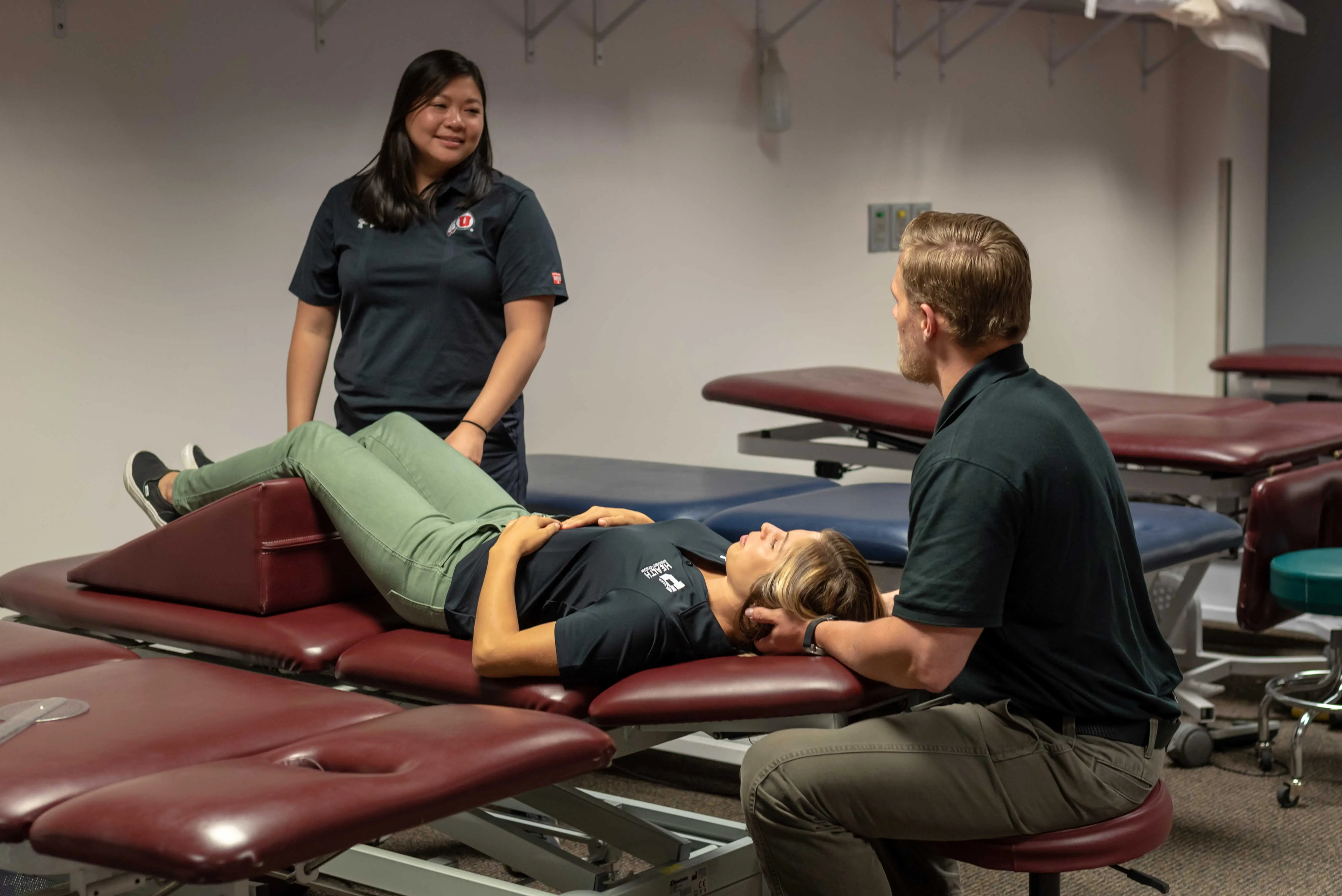
“ I'm really proud of the product that we're putting together, both from a teaching and learning standpoint, but also the quality of the content that has been produced and created and made available for our students.”
What sets the University of Utah’s DPT program apart is that it provides both an outstanding residential and hybrid education. Residential students in Salt Lake City and St. George follow a more traditional classroom-based structure, while hybrid students take advantage of the flexibility that online learning offers. Both learning platforms provide the same high-quality education the University of Utah is known for.
Student Experiences and Expectations:
Aside from the hybrid experience, students often want to know what they can expect from a program. The DPT program spans three years, with the first two years primarily focusing on classroom learning and laboratory experiences. Students will concentrate on clinical rotations in their final year and half of the program. During this period, students venture into real-world clinical settings, and work closely with their clinical instructors. This hands-on approach allows students to engage in four distinct rotations, allowing students to work within various environments such as hospitals, nursing homes, and outpatient orthopedic clinics.
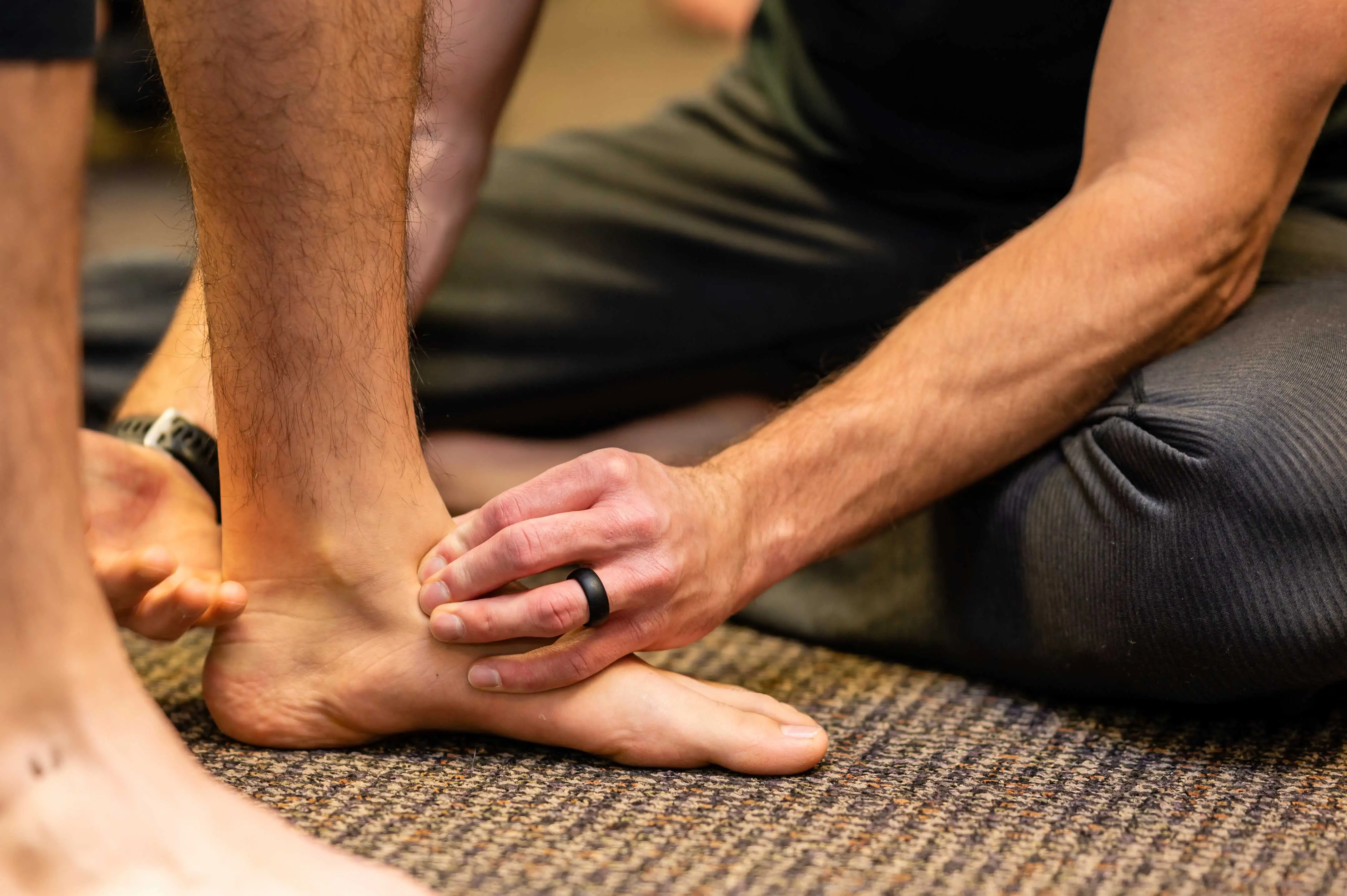
“ Our job is to develop exceptional general physical therapists who are confident in any of those settings.”
Culture and Community:
Developing a strong sense of community and a culture of communication was another aspect of the program that Dr. Hale emphasized. She spoke about the pathway’s intentional efforts in creating a strong sense of community from day one. Dr. Hale shared multiple opportunities, both in person and virtually, where students can cultivate the same types of relationships they would in a fully residential program. During the visits to campus, students have opportunities to interact with peers and faculty in a variety of activities. While remote, students can participate in the student council, study groups, and occasional synchronous activities.
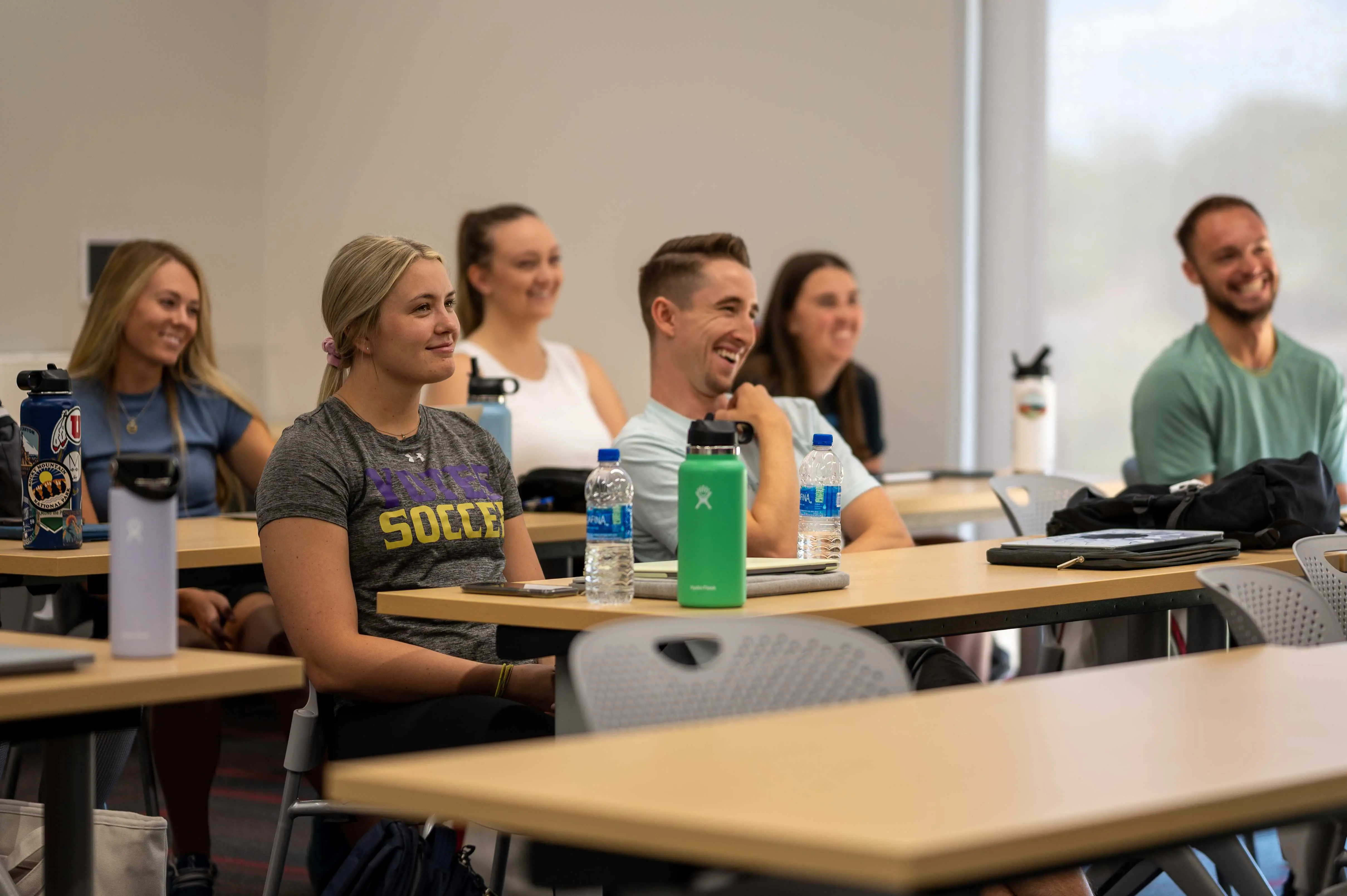
Student Experiences and Internships:
Research is one important aspect of the DPT pathway, and there are opportunities for students to interact with tenure-line faculty and cutting-edge research, as well as clinical faculty that are teaching students the skills they need as a healthcare provider.
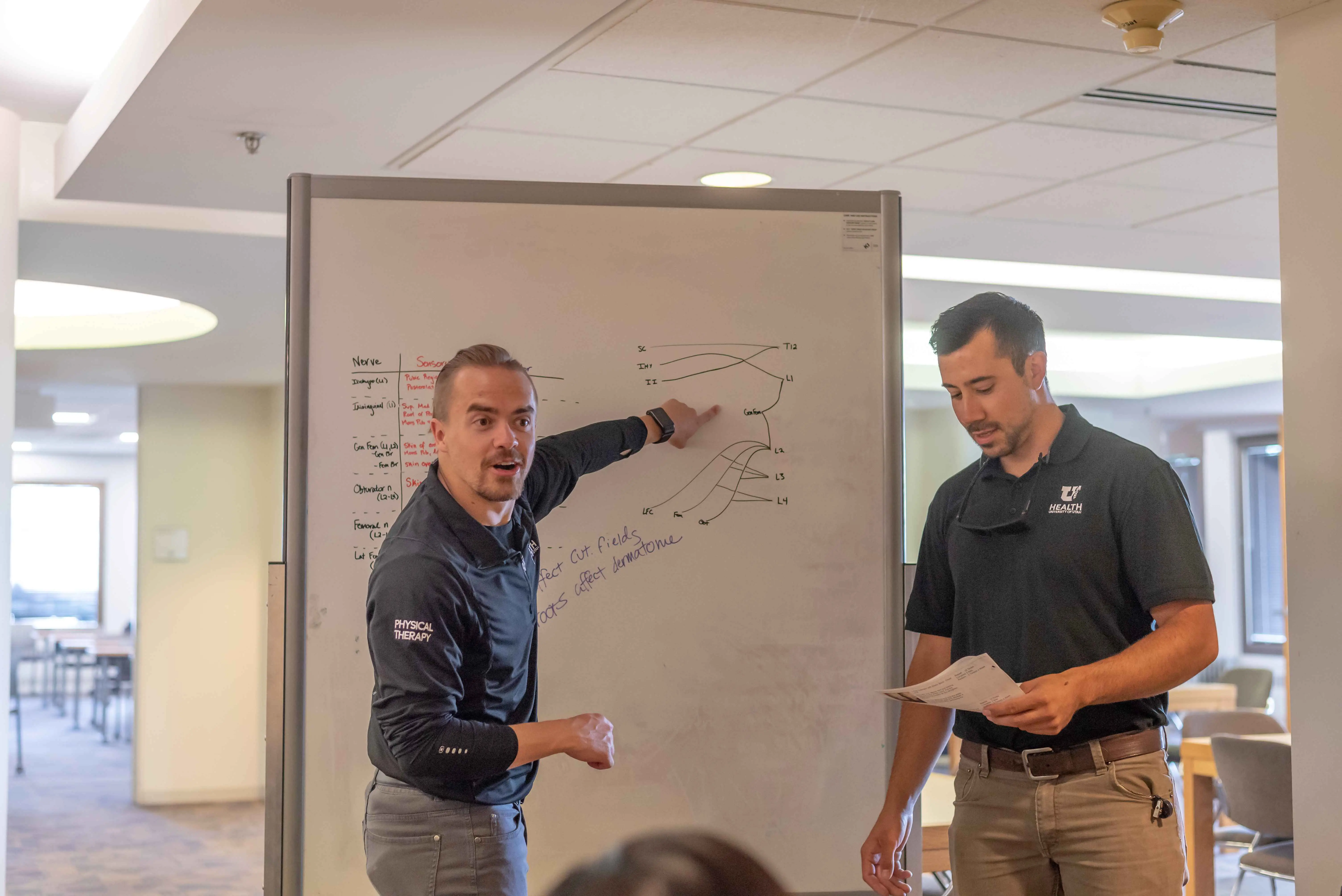
“ Our goal is to not only develop holistic healthcare providers that value science and innovation and may have interest going out and getting their terminal degree and advancing the profession, but also developing skilled clinicians that can go out into the healthcare setting and be productive and effective healthcare providers.”
Student internships are a major part of the DPT program. The program requires four clinical rotations between 8 to 12 weeks long. A number of placements occur within Utah, but there are around 900 clinical sites over the country. This means that students who enter the program outside of Utah will have a full team to support their in-person experiential learning.
Closing Thoughts:
As healthcare education continues to evolve, pathways like the University of Utah’s DPT Hybrid Program are paving the way by developing an immersive, flexible, and innovative education for aspiring physical therapists. The Doctorate of Physical Therapy has three pathways to choose from, depending on your needs. The Salt Lake City residential option, the St. George residential option, and the Hybrid option.
For those interested in learning more about the program offerings, or to sign up for an information session, please visit here.
